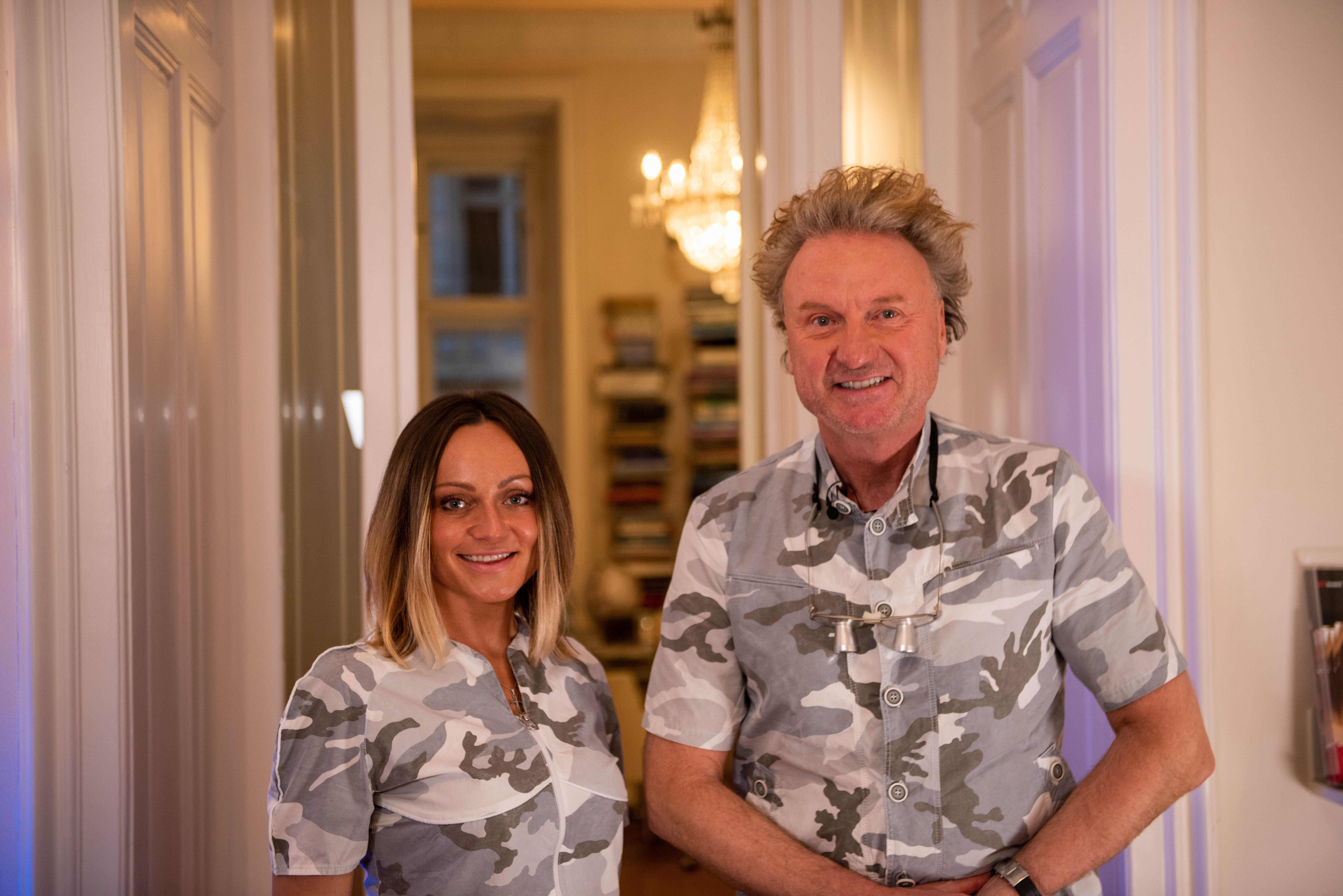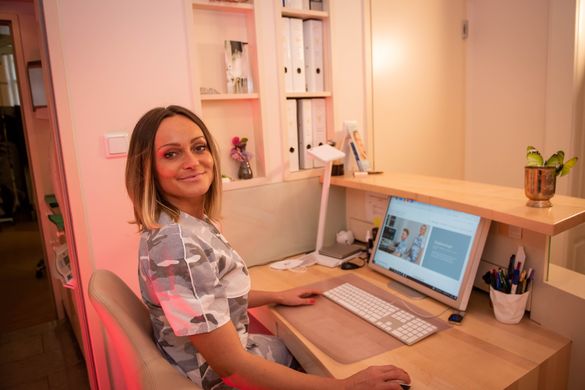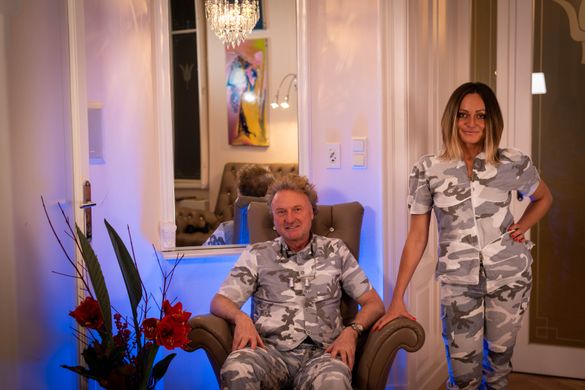
As an oral and maxillofacial surgeon, how did you find your way into implant dentistry?
I had my first experiences with dental implants in 1994 as a young assistant at the university clinic. I started early to apply what I saw in the surgeries that I was allowed to watch there in the dental practices of colleagues. For a young and technically skilled man like me, this worked quite well.
Although I successfully placed a great number of titanium implants for some years, I was often dissatisfied with the peri-implant tissue conditions. What was not known at that time was that when titanium particles are phagocytosed by macrophages, they release cytokines – today this is known to be the cause of many peri-implant complications.
At a congress I then came into contact with a company that manufactured ceramic implants, and since I was open to new systems and materials, I agreed to try it out, despite not being fully convinced by the machined implant surface, which resembled that of an earlier Brånemark System® implant. In addition, the patient had to wear a deep-drawing splint for six months to protect the implant during the healing phase. My patients were really put off by this. Also, this procedure did in no way guarantee successful healing, which is why I relatively quickly distanced myself from this system and this material. The practical application was simply too time-consuming and the result not predictable enough.
What prompted you to also offer ceramic implants?
About 14 years ago, my friend Harald Fahrenholz told me about a colleague named Johan Feith who had developed a novel ceramic implant system. His implant was then called ZV3 and is now known as Patent™ Dental Implant System. Despite my initial skepticism, I agreed to visit him in his office in Munich. Three hours later, I left as an advocate of ceramic implant systems. Johan Feith convinced me that ceramics work when the implant system is made purposefully with the specific materials characteristics in mind. Unlike the machined system I already knew, Johan Feith had developed and patented a manufacturing process with which a roughness is created that is on par with that of titanium implant surfaces. This guaranteed reliable osseointegration of his ceramic implants.
During my visit at Johan Feith’s office I also learned about the titanium stimulation test by Volker von Baehr, IMD - Institute for Medical Diagnostics, Berlin-Potsdam, for the first time. An orthopedic research group concerned with failing knee and hip implants found that titanium particles are phagocytosed by macrophages in the surrounding tissue and react – genetically determined – with the release of cytokines, initiating an inflammatory reaction. This is a local intolerance that is confined the "site of action" – which in our profession is the peri-implant tissue.
However, this is not the case with all titanium implants. For instance, Holger Zipprich has shown that, due to micromovements between the abutment and the implant, titanium particles are released into the surrounding tissues, which are then phagocytosed. This results in local mucositis and, in the worst case, peri-implantitis. In contrast, studies on ceramic particles have shown that macrophages do not respond to them by releasing cytokines. As a converted zirconia implant advocate, I immediately started to work with Feith’s implant system and acquired the first patients, who were thrilled by the white, tooth-like implant color. Especially during the healing phase and after the subsequent prosthetic restoration, I noticed that the peri-implant tissue around these zirconia implants looks almost perfect, unlike that around titanium implants.


Download our brochure on Bio-Integration here:
What needs to be particularly considered when placing ceramic implants?
Experience shows that potential problems with ceramic implants are limited to the healing period. In order to achieve reliable osseointegration, three points should be taken into account: first, it is of great importance that perfect primary stability of the implant is achieved. In addition, bone metabolism must be stimulated to the maximum with a vitamin D level at the upper limit. Also, it is crucial that implants are not placed in periodontally compromised sites. If these three factors are taken into consideration, then there should be no problems with the healing of ceramic implants.
In what ways does the Patent™ Dental Implant System differ from titanium implants?
Unlike most bone-level implants made of titanium, the Patent™ Implant emerges from the bone, diverges tulip-shaped at the top and must be placed isogingivally. If the implant protrudes a bit above the mucosa, it is even allowed to grind it to reduce it to soft-tissue level. This by no means works with all implant systems. The prosthetic restoration of the implant is, as they say in Austria, "watscheneinfach" (as easy as it gets) and in principle comparable to that of a natural tooth. The fiberglass post is inserted into the implant, cemented, ground and then an impression is taken – that's it, any dentist can do that.
Moreover, inserting a Patent™ Implant is extremely fast. The drilling process is identical to titanium and so is the insertion. However, there is nothing to screw, and no insertion posts or gingiva formers are required. Sometimes I am almost a little embarrassed in front of my patients because of the short surgery times. It often takes only two to three minutes until the implant is inserted and the surgical procedure is done. My patients sometimes ask me: "Doctor, so much money for such a short procedure?" To which I like to reply, "You're paying so much money because it is so fast!"
In your opinion, what does the future of implant dentistry look like?
The trend is moving more and more toward the use of biocompatible materials. The number of patients suffering from inexplicable symptoms is increasing. By no means do I argue that titanium has always something to do with that. In most cases the origins of these problems are multifactorial: one thing adds to another until the body is becoming overwhelmed and is no longer able to cope. It should be our priority to put as few things as possible into our patients that could potentially have adverse health effects. The use of biocompatible materials, such as zirconia, to which no incompatibilities are known, is a good start.
However, ceramic dental implants are nowhere near as established on the market as titanium systems. There is still some work to be done when it comes to the fixation of removable dentures on zirconia implants, for example. Elderly people who are in need of such restorations make up a large proportion of my patients. Titanium systems still have an advantage here. However, it is only a matter of time until these kinds of restorations can be realized with ceramic implant systems too. I personally have nine implants placed in my mouth: six titanium implants from earlier times and three Patent™ Implants which were inserted by Johan Feith himself. If I were to lose another tooth at some point in the future, only Patent™ would be an option for me.
First published in German language in issue 4/21 of Zahn Krone (MedMedia Verlag).
The e-Paper version can be accessed via the following link: https://www.medmedia.at/medien/zahnkrone/







